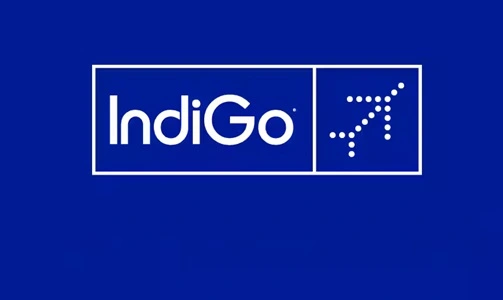IndiGo Airlines, operated by InterGlobe Aviation, has emerged as India’s leading low-cost carrier (LCC) and one of Asia’s largest airlines. Founded in 2006, IndiGo has successfully transformed India’s aviation landscape by offering affordable, punctual, and reliable air travel. With a market share of around 54.2% in India as of 2024, the airline has been pivotal in democratizing air travel in the country. The following SWOT analysis delves into IndiGo’s strengths, weaknesses, opportunities, and threats, while also exploring its current overview and future plans.

Indigo Airlines Current Overview
Today IndiGo Airlines holds a dominant position in the Indian aviation market, offering over 1,500 daily flights and connecting 78 domestic and 29 international destinations. The airline operates a fleet of more than 300 aircraft, primarily comprising Airbus A320s and A321s, known for their operational efficiency. Despite facing operational challenges such as engine issues with certain aircraft, IndiGo has managed to maintain its position as the market leader.
The company’s fiscal performance remains robust. It reported a 323% rise in revenue in 2023 compared to the previous year. Indigo’s focus on cost efficiency, including fuel hedging strategies and high aircraft utilization, has enabled it to offer low fares and remain profitable in a competitive market.
Future Plans
Looking ahead, IndiGo is focusing on international expansion, targeting Europe, the Middle East, and the United States. It has ordered over 500 new Airbus aircraft to expand its fleet. Additionally, IndiGo is actively working on improving customer experience, reducing operational bottlenecks, and strengthening its digital presence, including enhanced booking and loyalty programs. The airline is also exploring strategic partnerships and alliances to expand its global footprint.
Strengths
1. Market Leader: IndiGo holds a dominant 55% market share in the Indian domestic market, significantly ahead of competitors such as Air India and SpiceJet. This leadership is bolstered by its strong brand recognition and reputation for punctuality and low fares.
2. Cost Efficiency: IndiGo’s operational model emphasizes cost leadership. Fleet commonality (mostly Airbus A320 family), direct ticket sales, and efficient maintenance procedures allow the airline to minimize operational costs, enabling it to offer highly competitive prices.
3. Punctuality and Reliability: IndiGo consistently ranks high in terms of on-time performance. Its quick aircraft turnaround times allow it to maximize fleet utilization and revenue generation.
4. Wide Network: With an extensive domestic and growing international network, IndiGo connects major cities and underserved regions, contributing to its high passenger load factor.
Weaknesses
1. Limited Business Class Offering: As a low-cost carrier, IndiGo does not cater to high-end business travelers as effectively as full-service airlines. This could limit its appeal in the premium travel segment.
2. International Expansion Gaps: While IndiGo has a significant presence domestically, it has been slower in expanding internationally compared to some of its competitors. It faces challenges in establishing itself as a global player.
3. Operational Issues: Recent engine problems, specifically with the Pratt & Whitney engines powering some of its aircraft, have caused flight cancellations and incurred high maintenance costs, impacting its reliability and profitability.
Opportunities
1. International Market Growth: Expanding into international markets, especially in Europe, the Middle East, and North America, presents significant revenue growth potential. By increasing the number of international routes, IndiGo can diversify its income streams.
2. Growing Middle-Class Demand: The rising middle class in India is leading to higher demand for affordable air travel. IndiGo, with its low-cost model, is well-positioned to capitalize on this growing market.
3. Government Support: The Indian government’s initiatives to boost regional connectivity through the UDAN scheme provide opportunities for IndiGo to expand to smaller cities and remote areas.
4. Partnerships and Alliances: Collaborating with global airlines through code-sharing agreements can help IndiGo expand its reach without incurring the full costs of operating in new international markets.
Threats
1. Rising Fuel Costs: Fuel prices have a direct impact on airline profitability. IndiGo’s ability to maintain its low-cost structure could be challenged by fluctuations in global fuel prices.
2. Intense Competition: The Indian aviation market is highly competitive, with other low-cost carriers like SpiceJet and full-service airlines such as Air India and Vistara vying for market share. New entrants, both domestic and international, pose additional threats.
3. Regulatory Challenges: Changes in government policies, such as new safety regulations, environmental standards, or taxes, could increase operational costs. Moreover, geopolitical tensions could disrupt international operations.
4. Engine Grounding Issues: IndiGo continues to face challenges with its fleet due to engine issues, which could affect its reliability and customer satisfaction if not resolved promptly.
Conclusion
IndiGo Airlines’ position as a market leader in India’s aviation sector is undeniable. Its cost-efficient business model, strong domestic network, and reputation for punctuality give it a competitive edge. However, the airline faces operational challenges, especially related to international expansion and technical issues. To maintain its leadership and grow internationally, IndiGo must address these weaknesses while capitalizing on emerging opportunities, such as expanding its global presence and tapping into the growing demand for affordable air travel in India. By focusing on strategic partnerships and addressing operational inefficiencies, IndiGo is well-positioned to navigate the dynamic aviation landscape in 2024 and beyond.